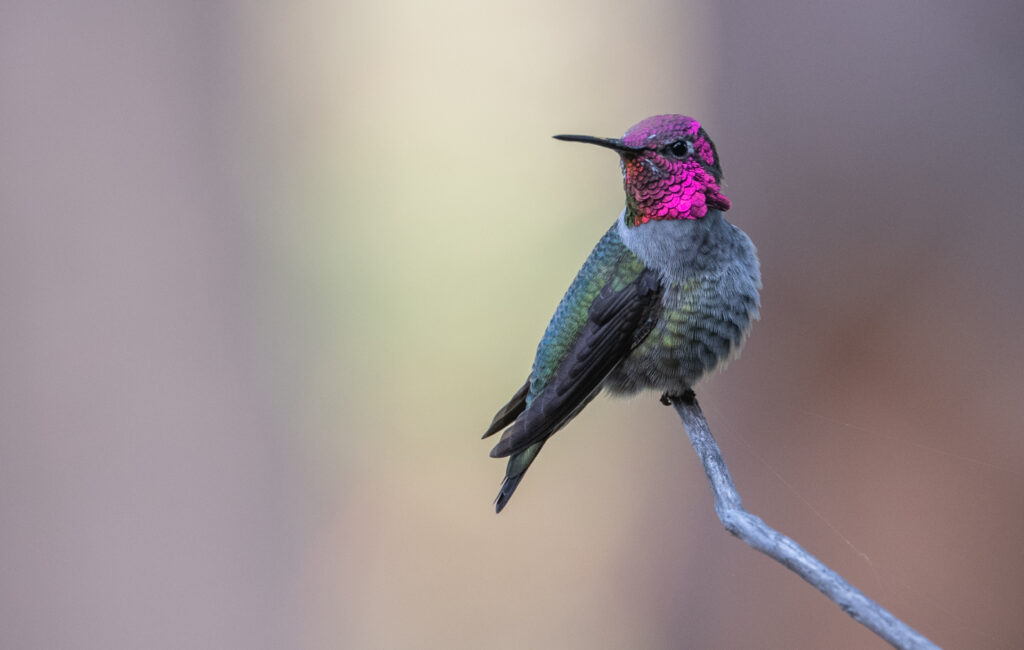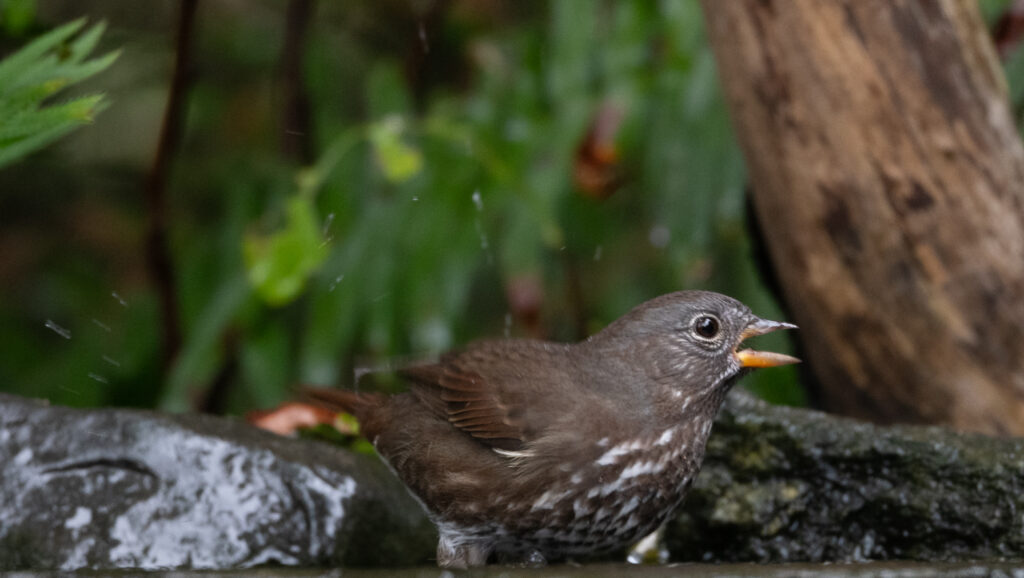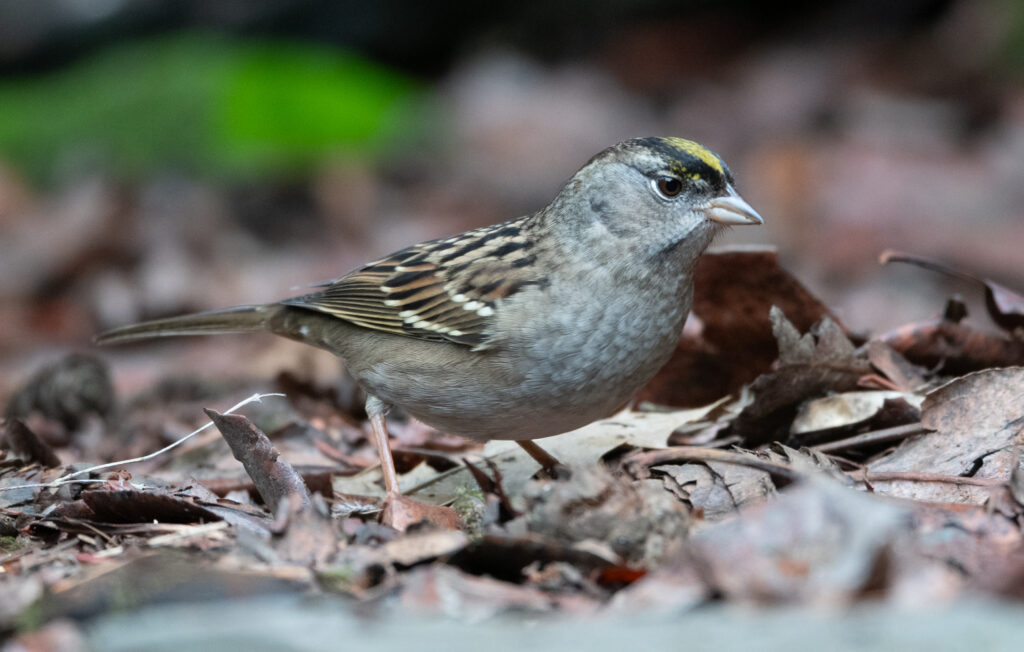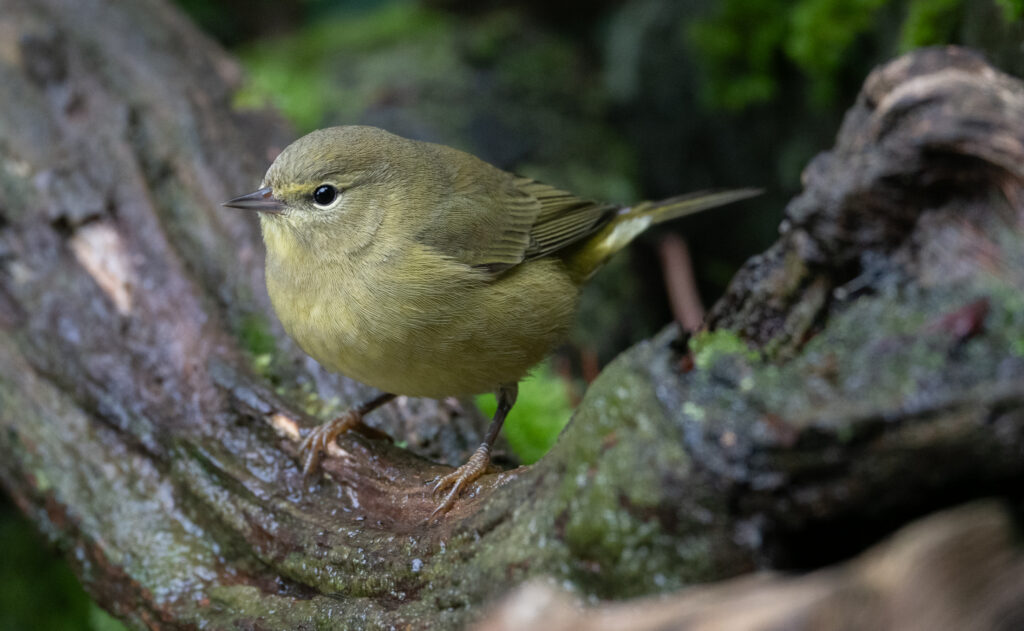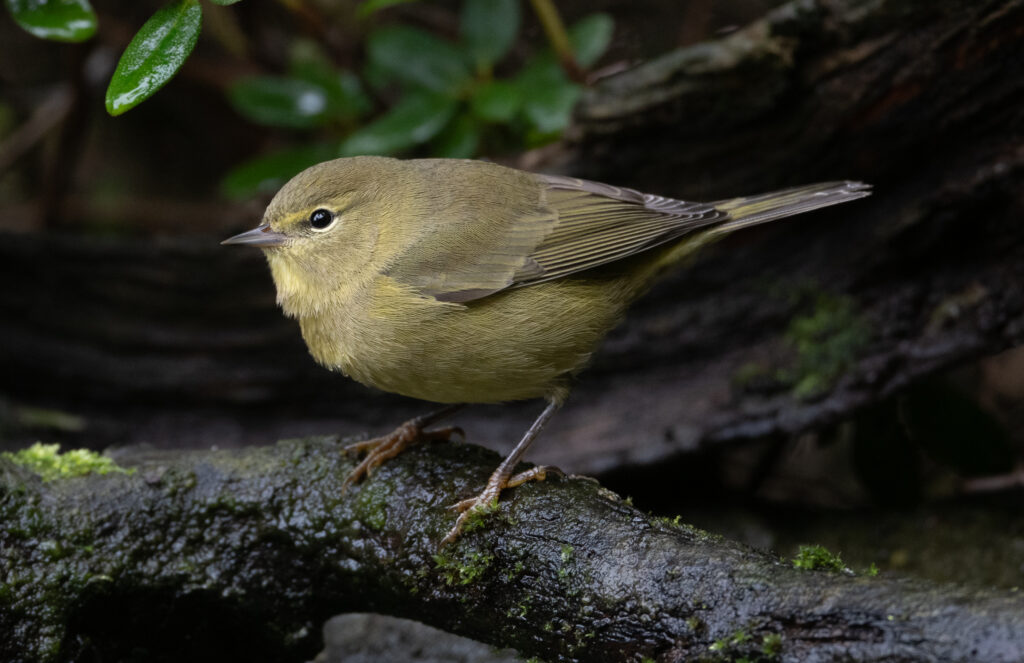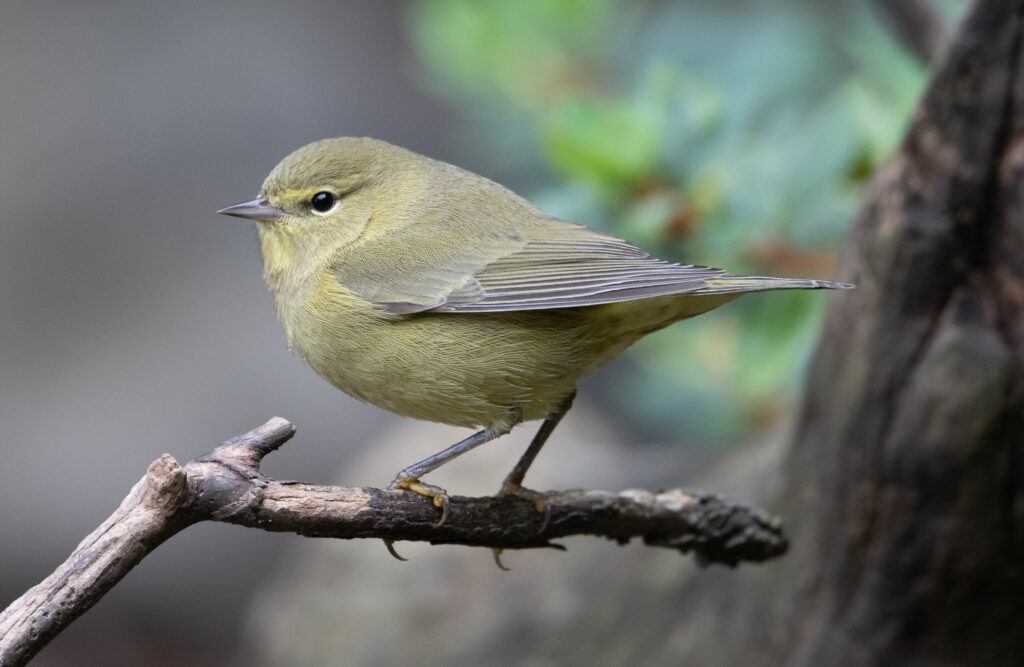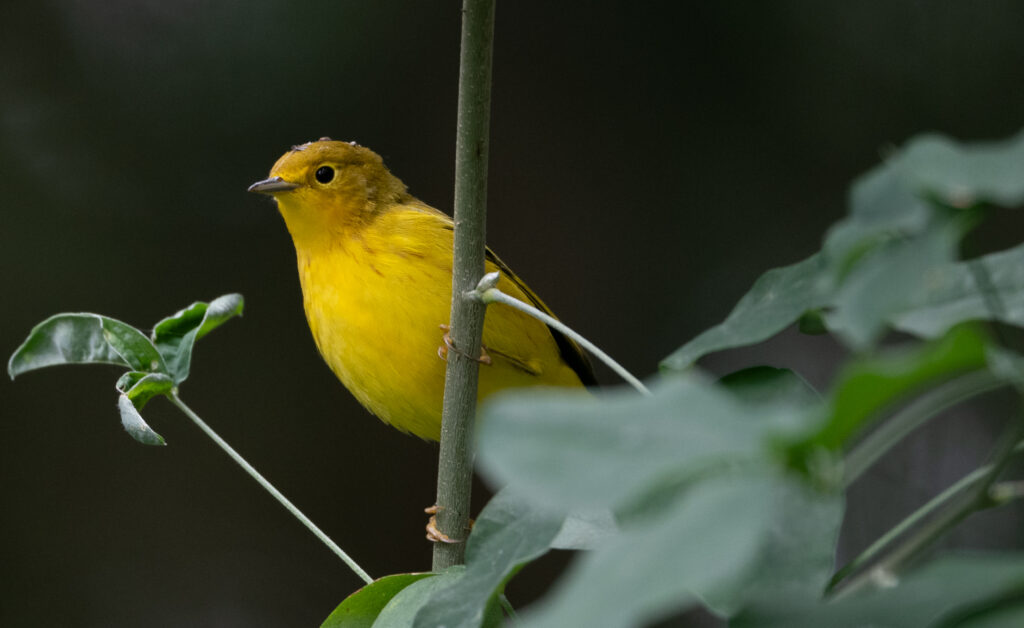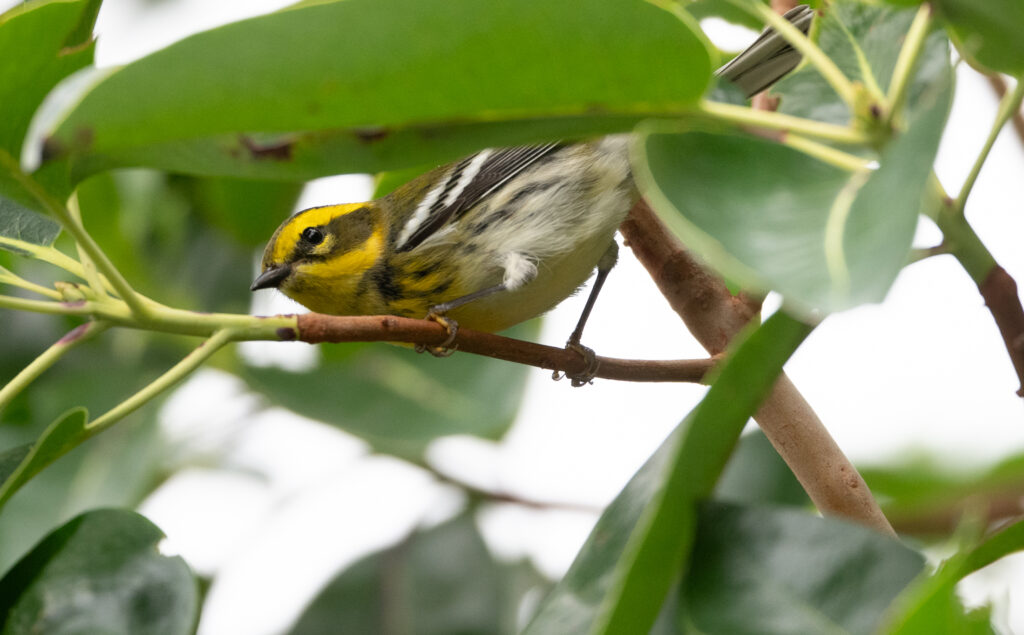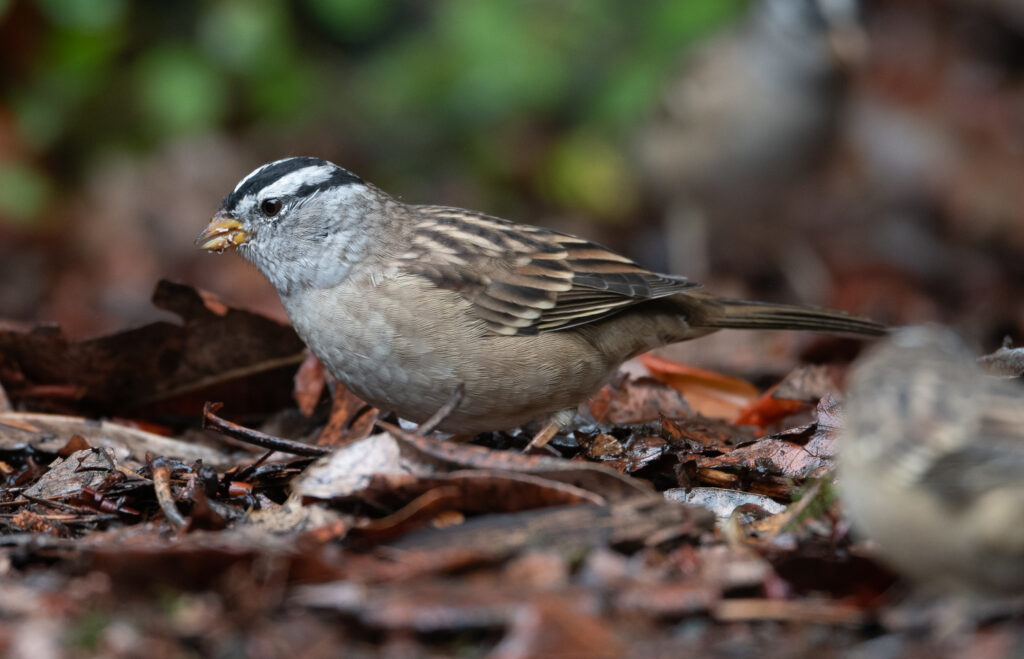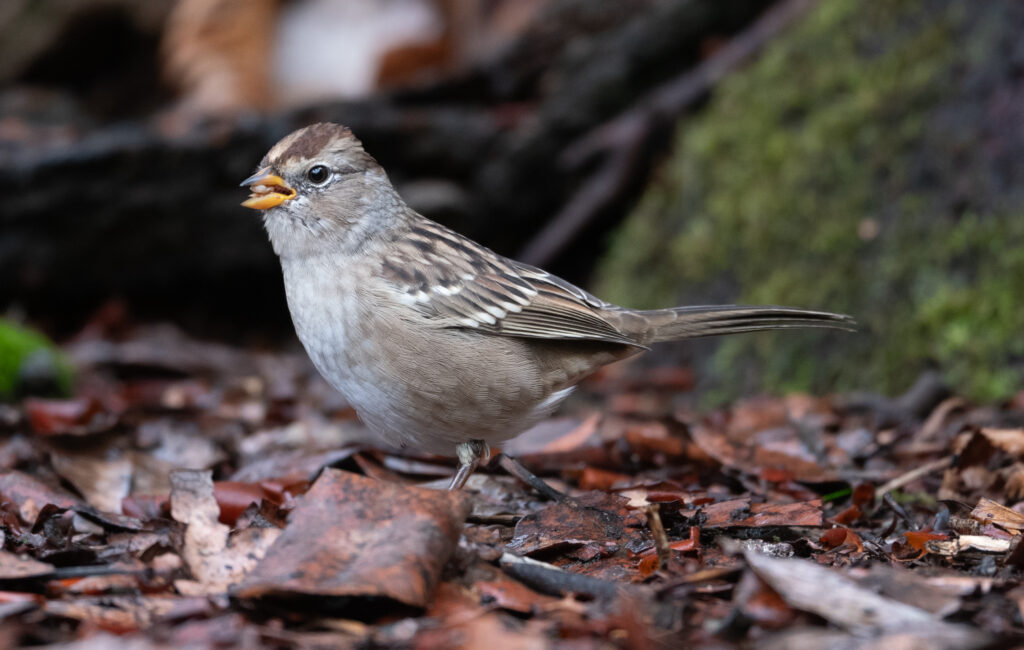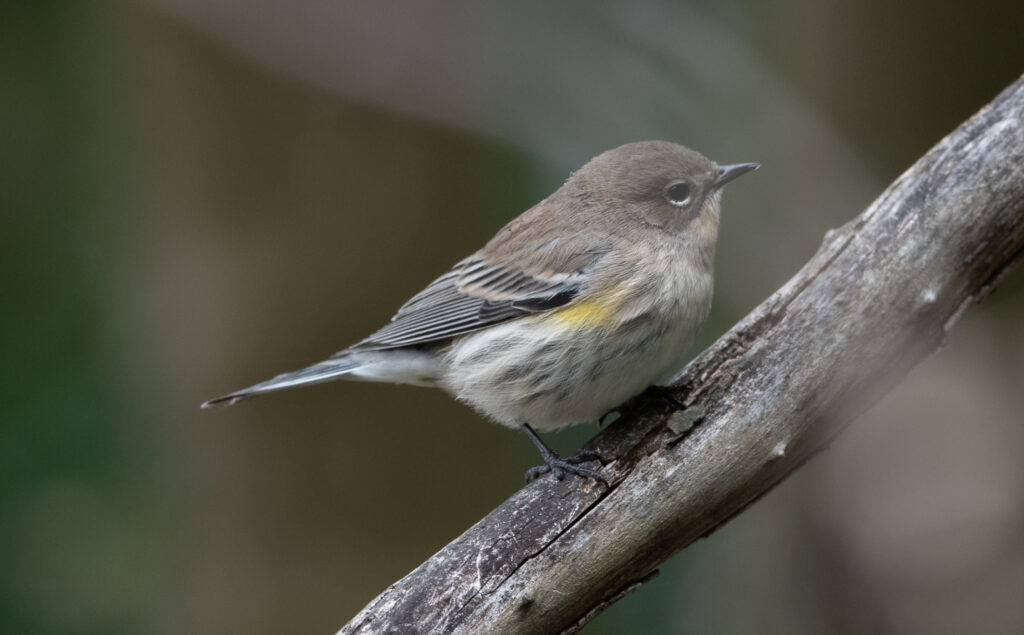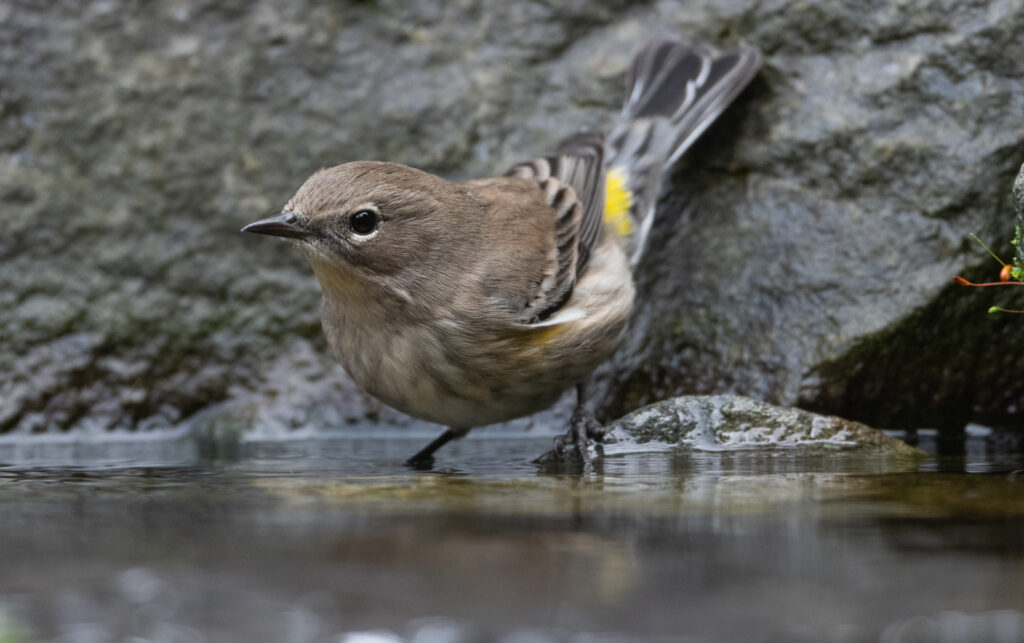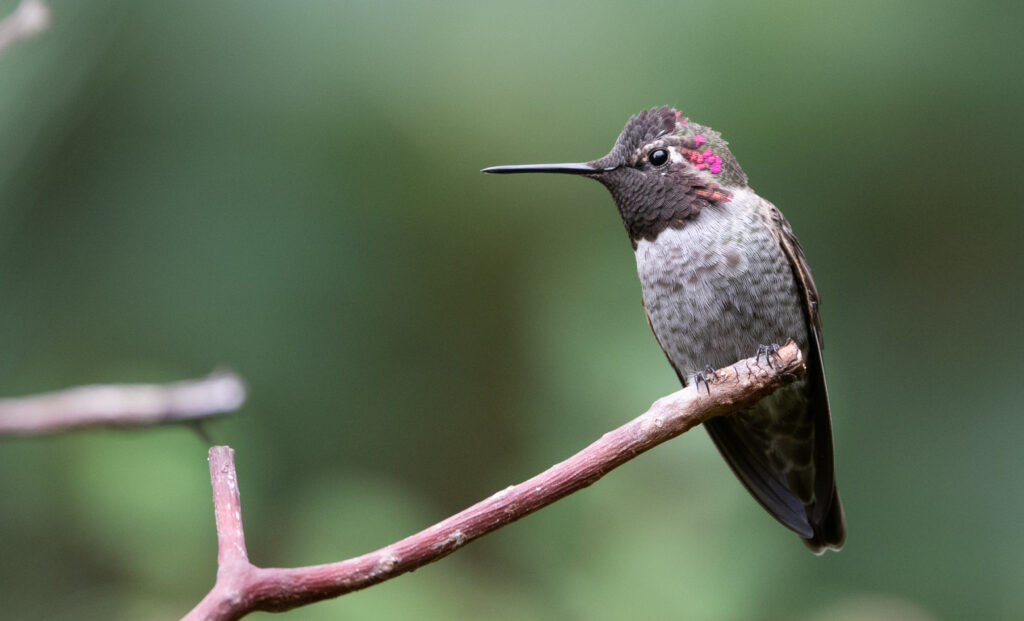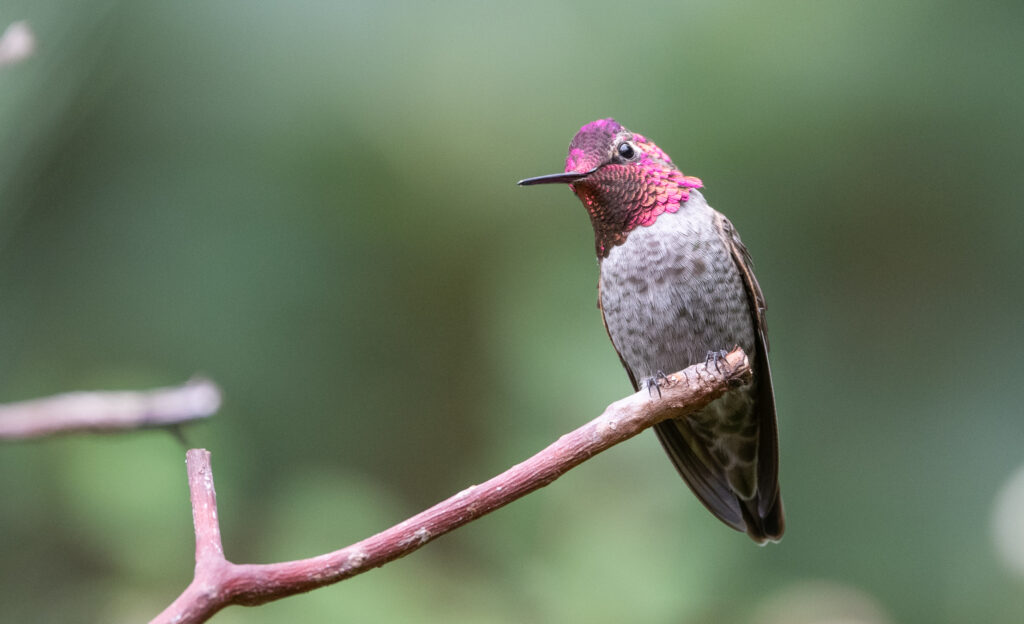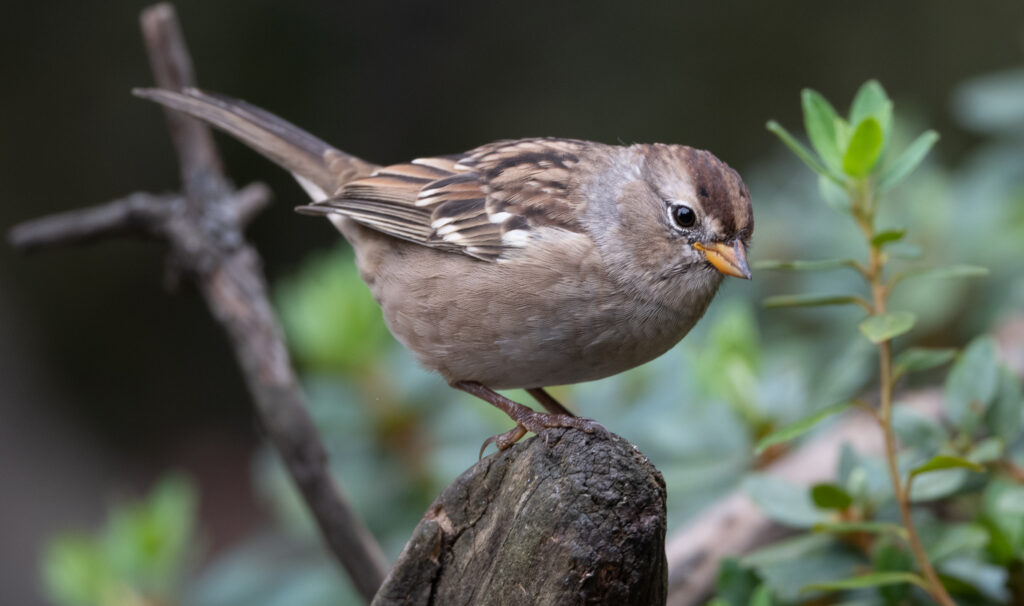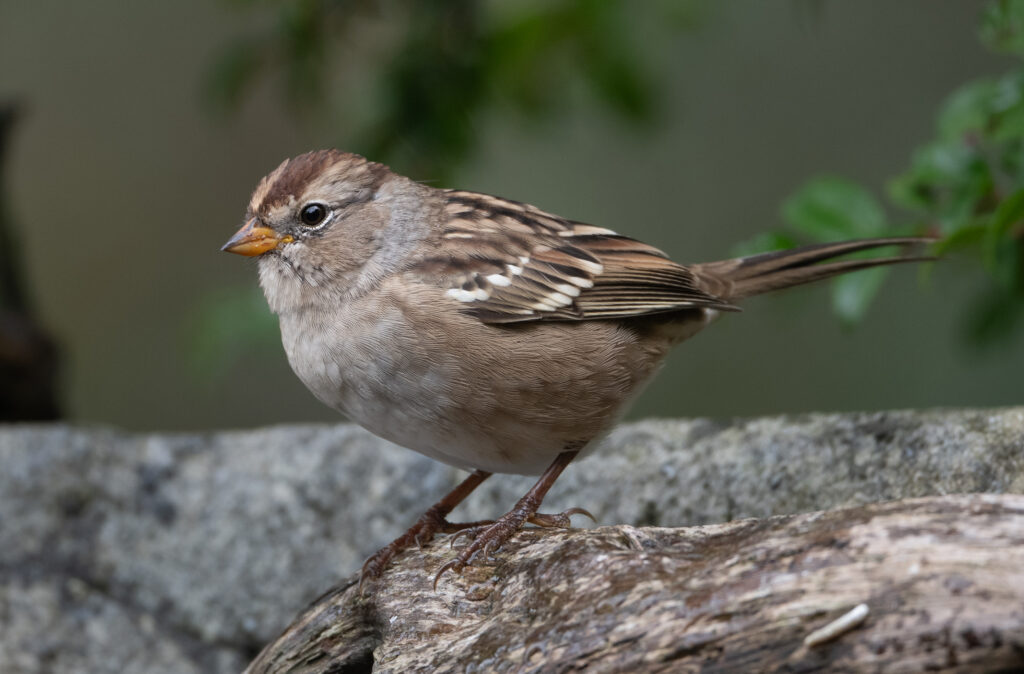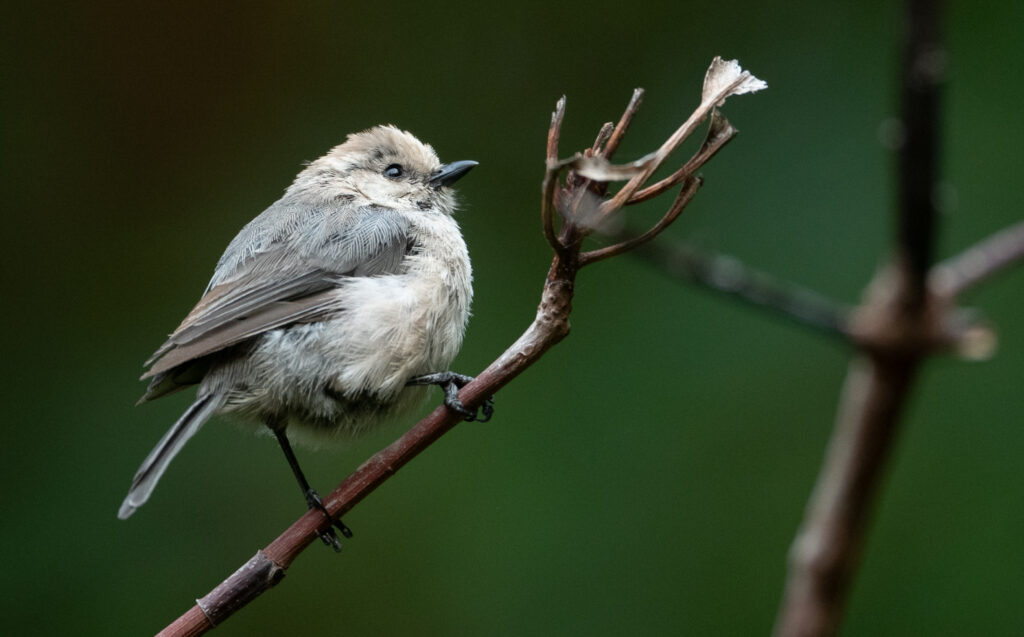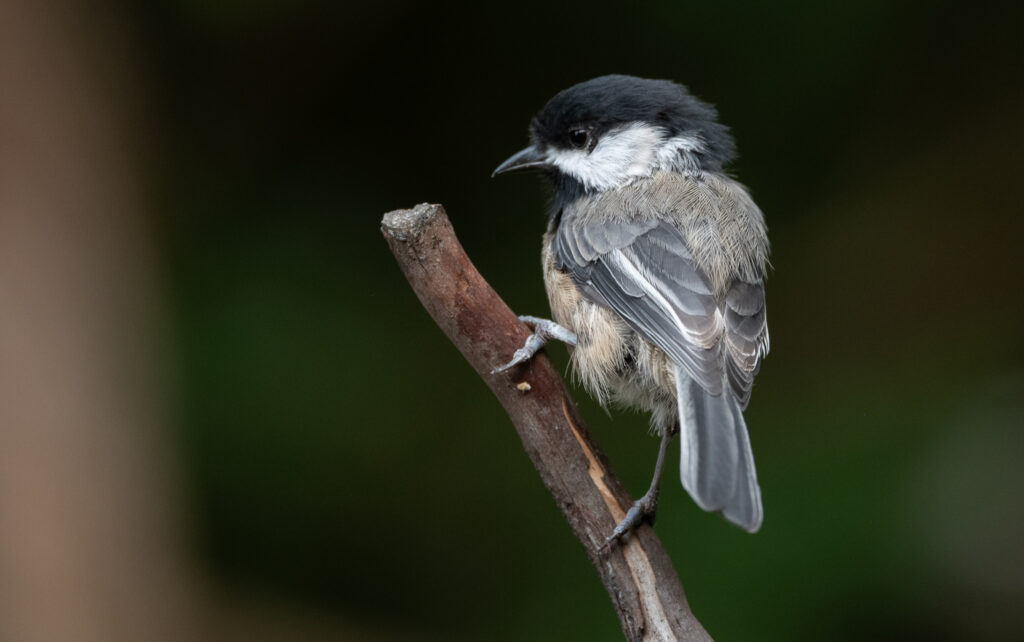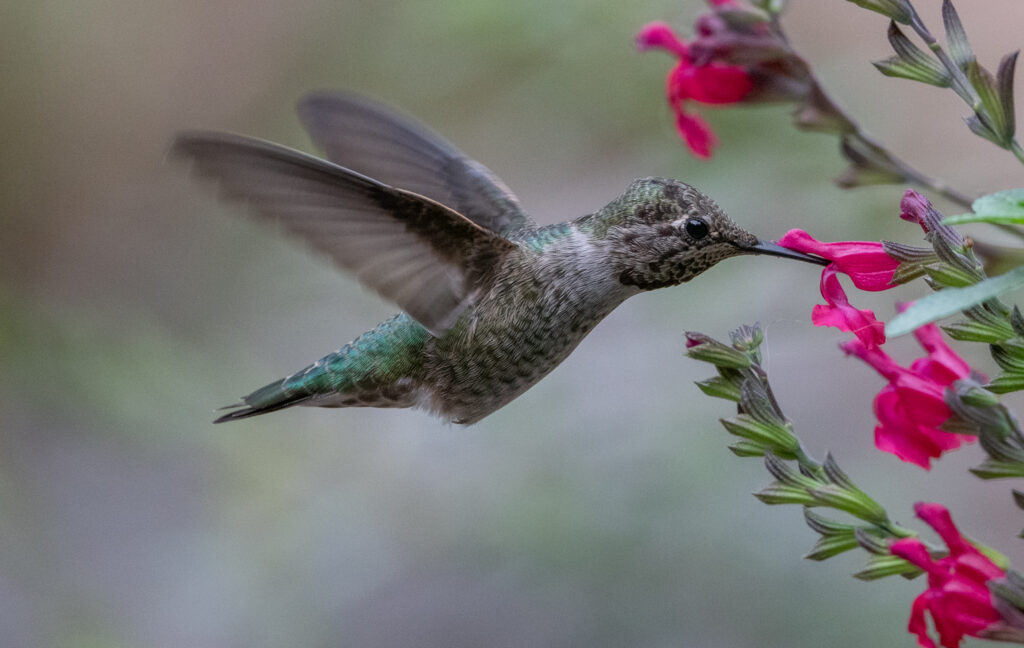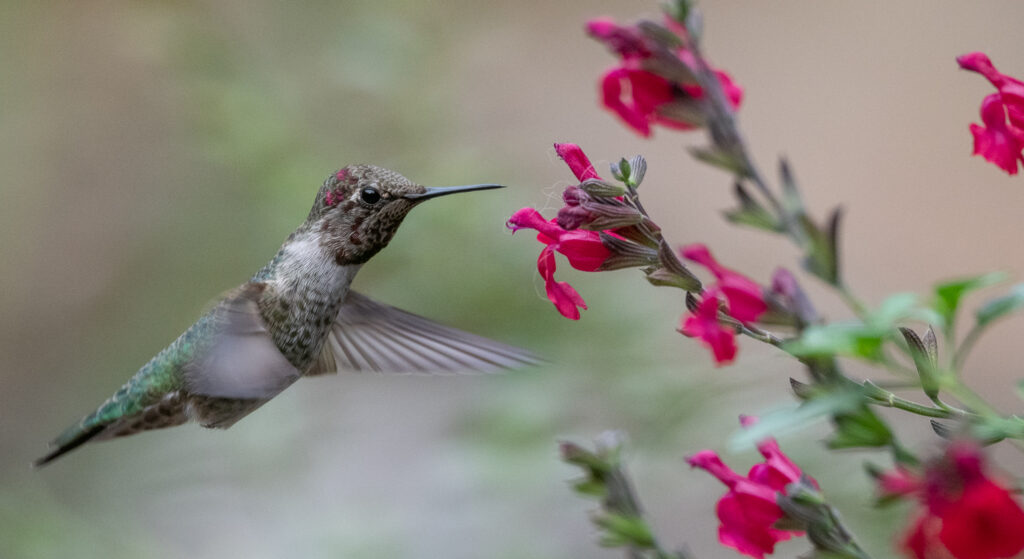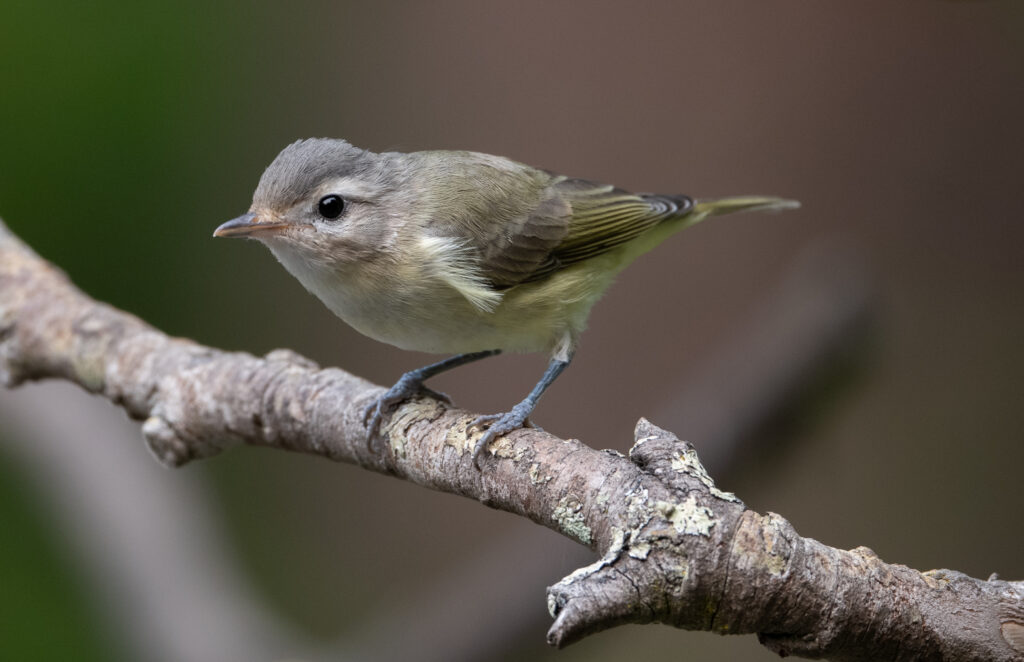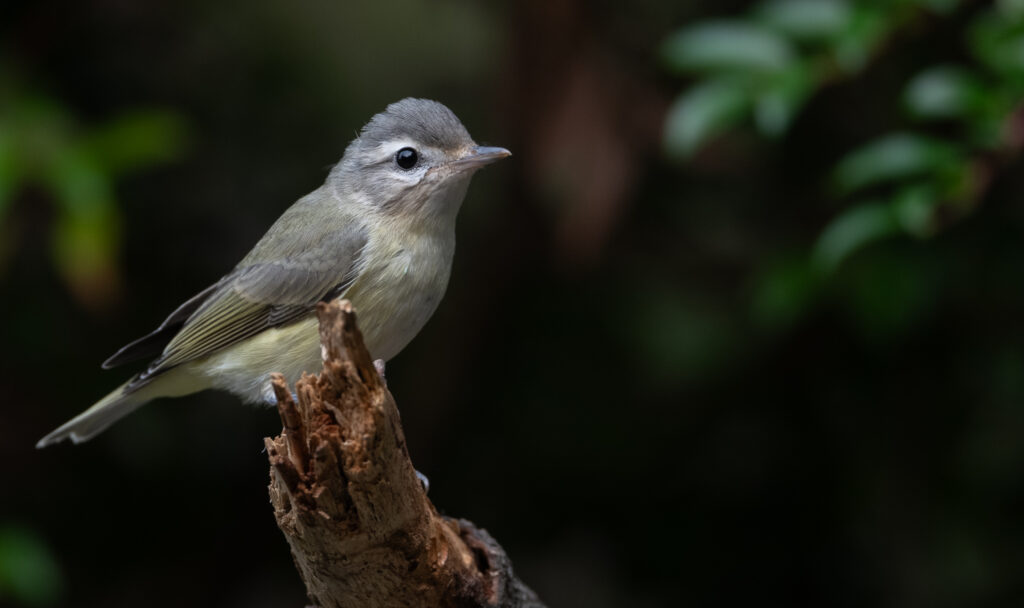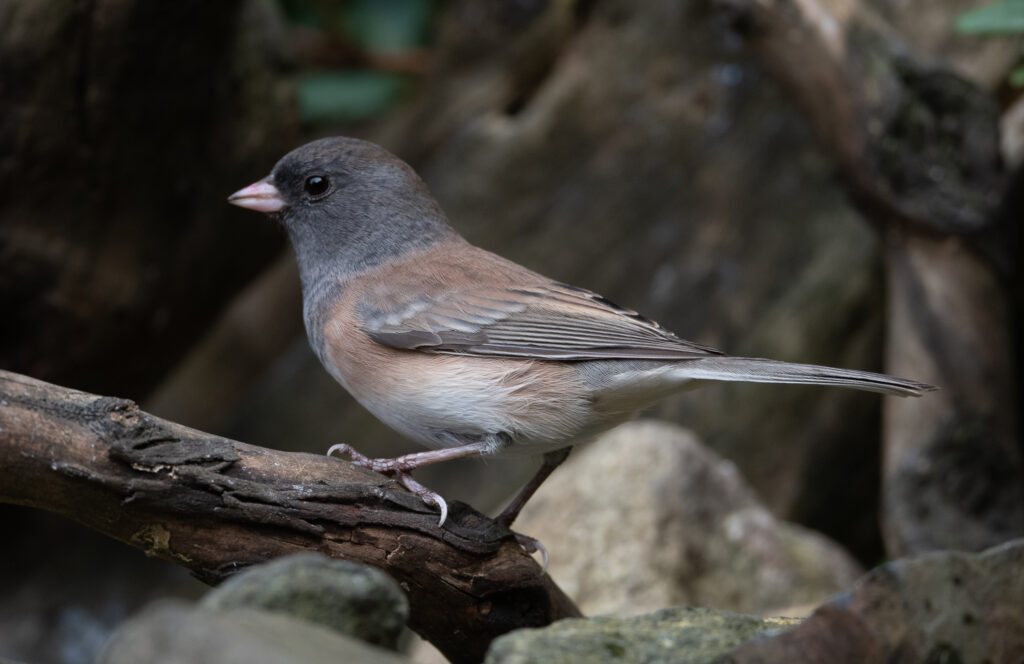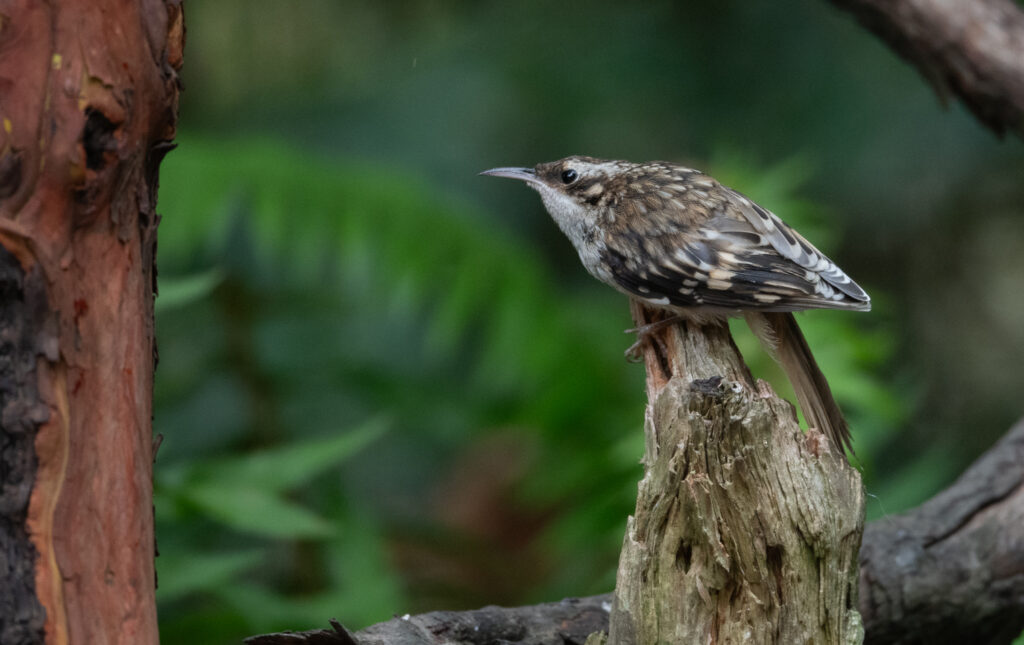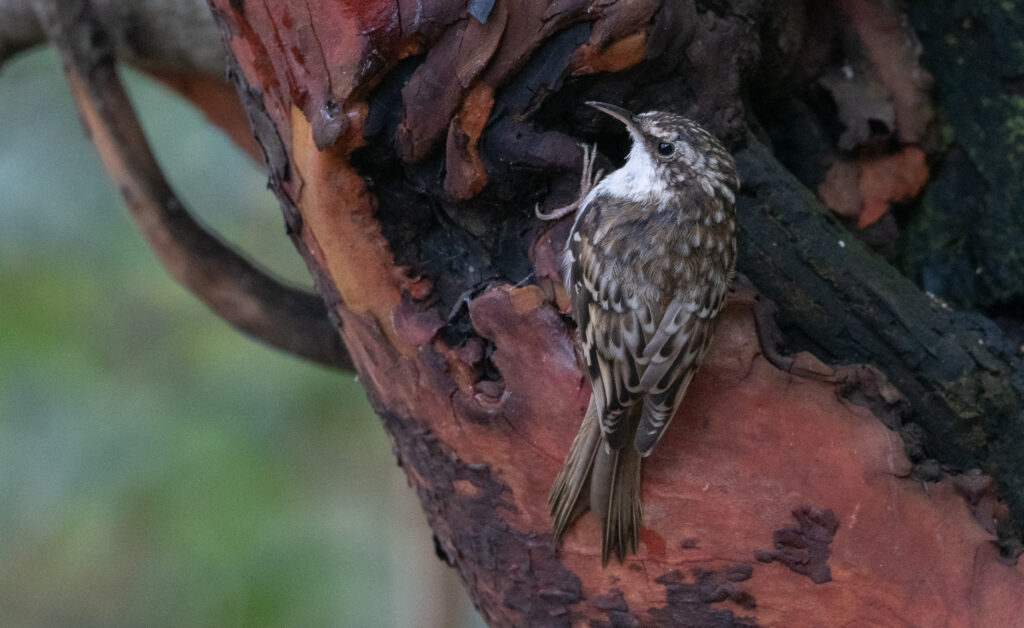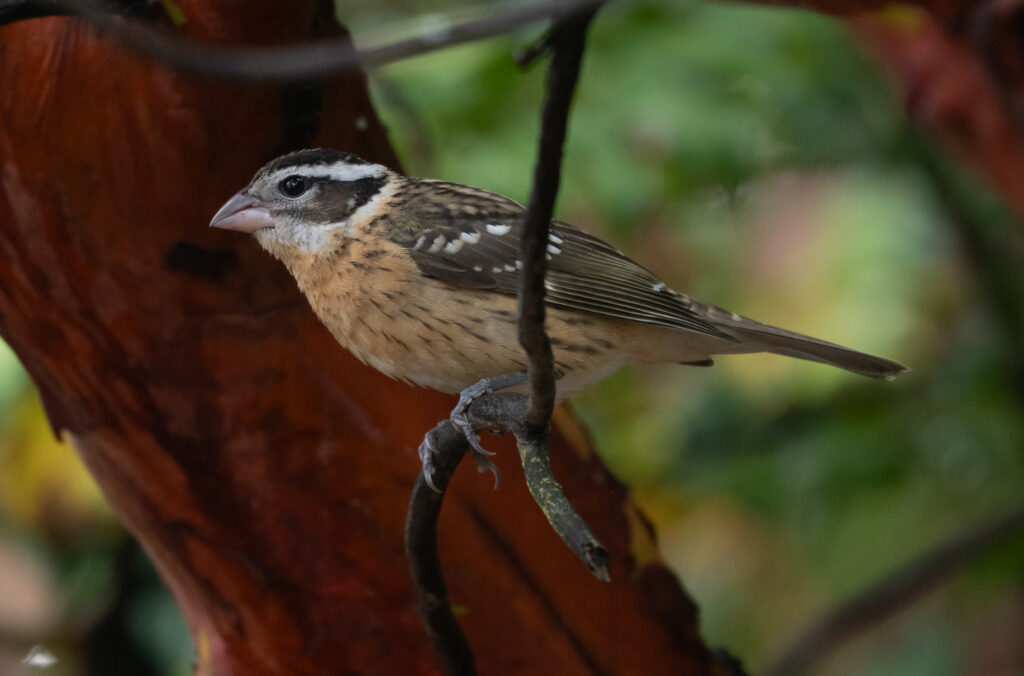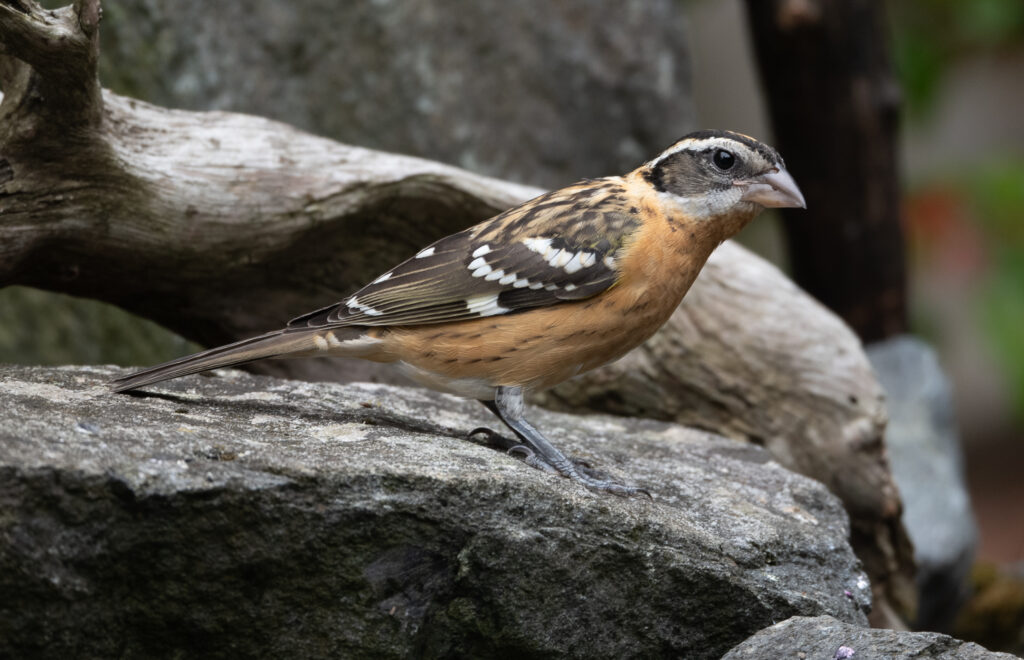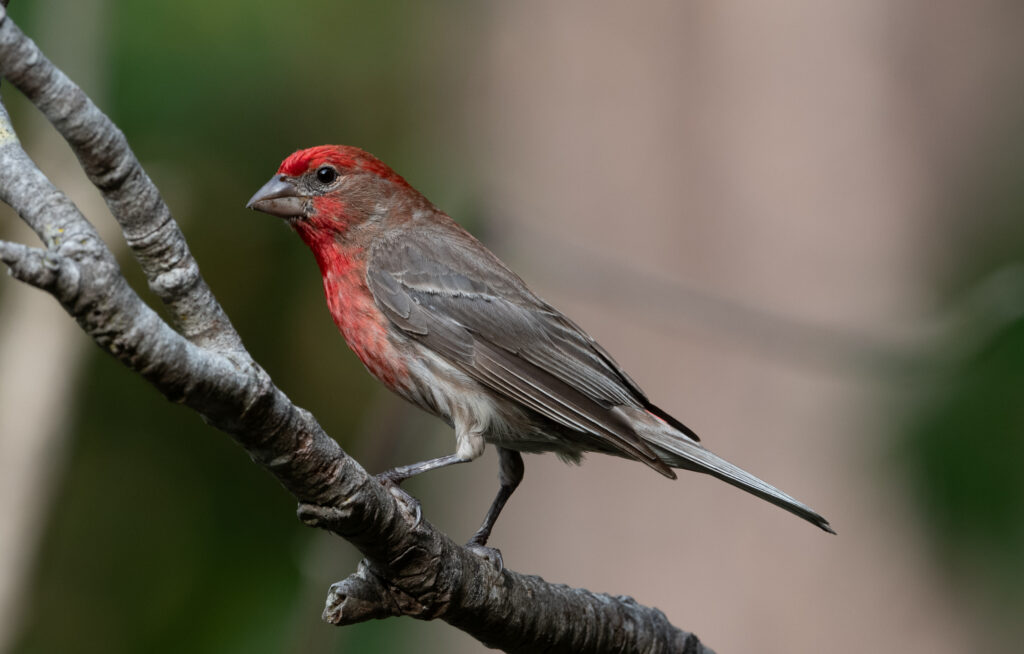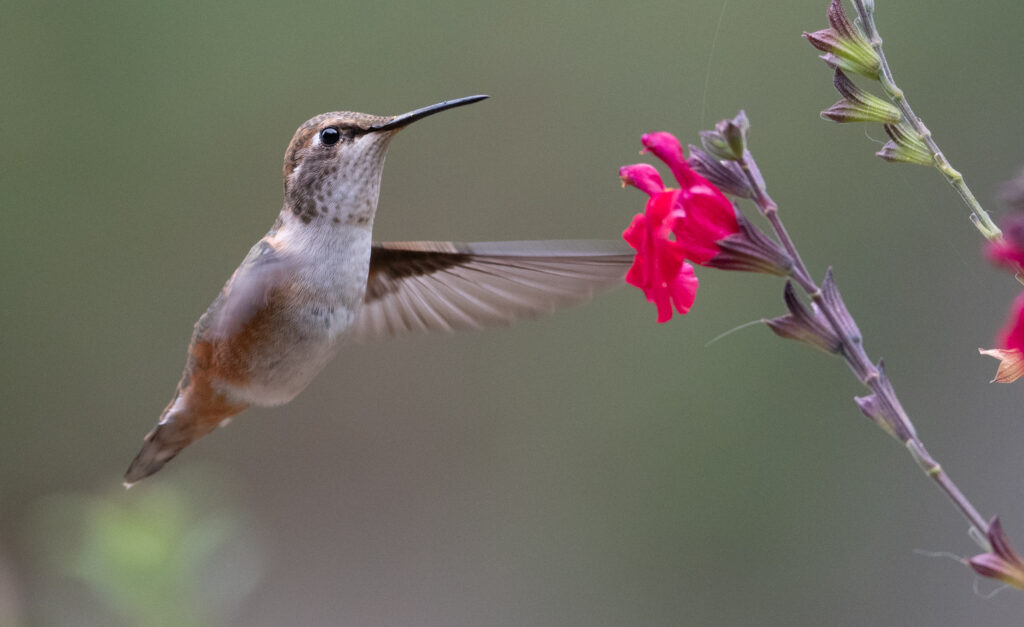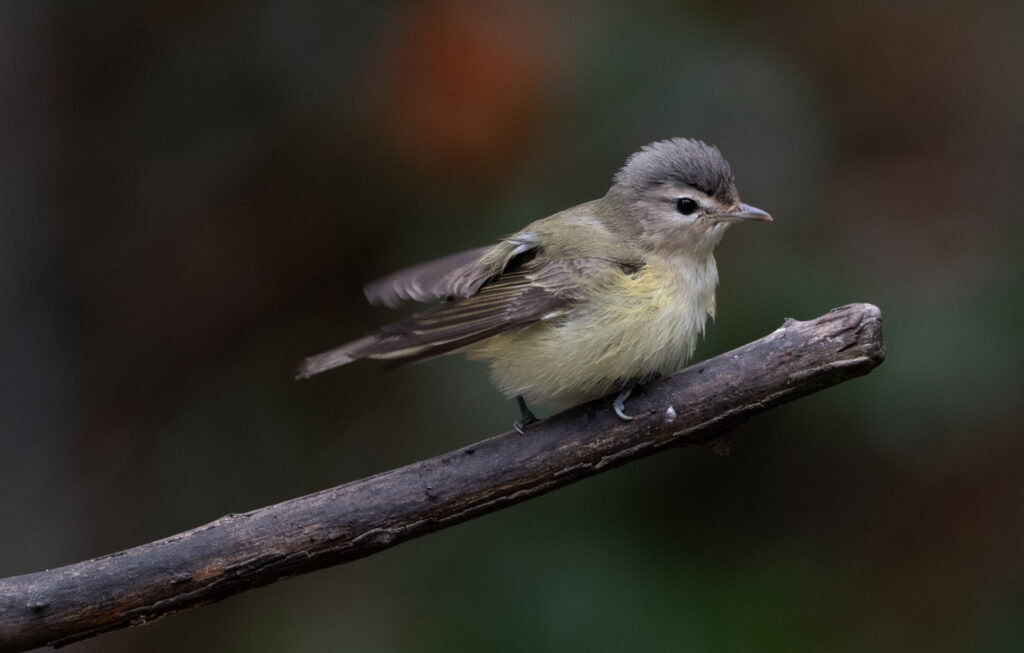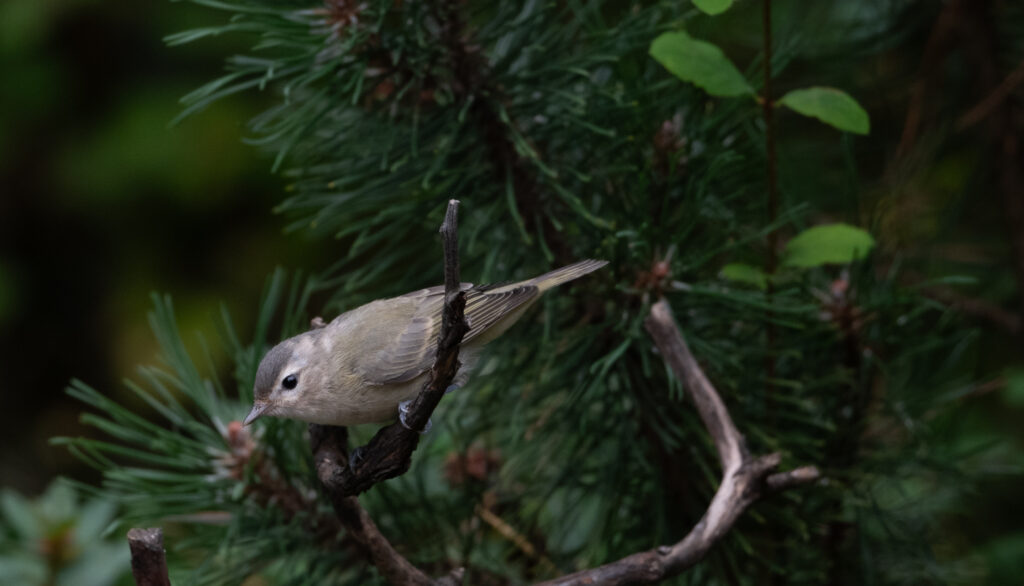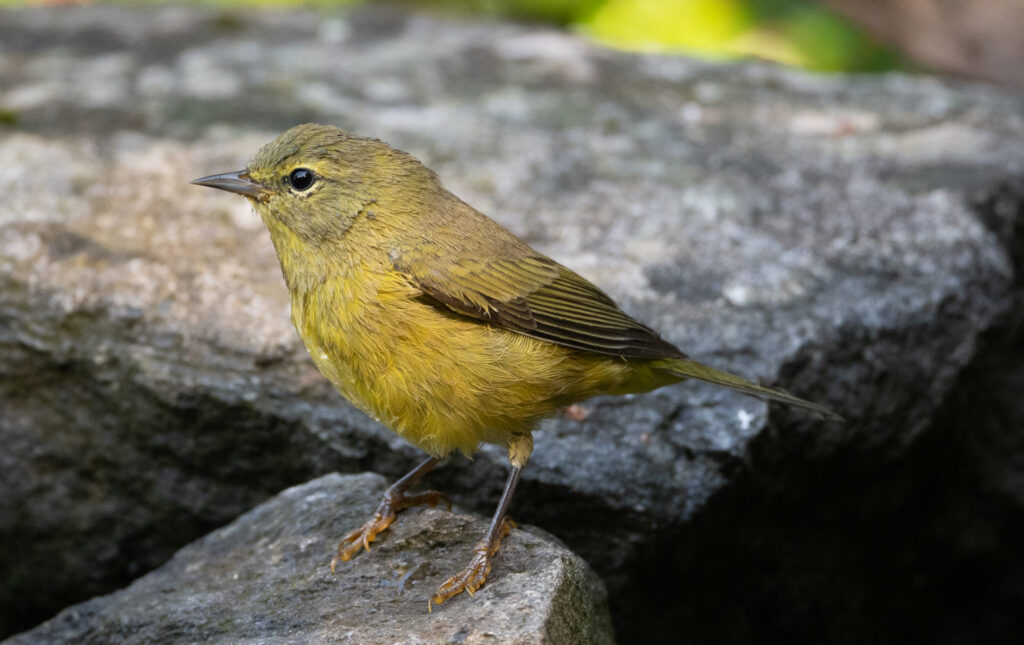On September 20, 2024, I was sitting in my office and glanced out the window to see a Yellow-rumped warbler flying around the watercourse. I went for my camera but by the time I got to the yard the warbler had departed.
I decided to sit outside for a while but for some time things were very slow. I did get a couple of more glimpses of a Yellow-rumped warbler, but no opportunities for good photos. Eventually a male (take my word for it!) Golden-crowned kinglet entered the watercourse and I was able to obtain some good photos.
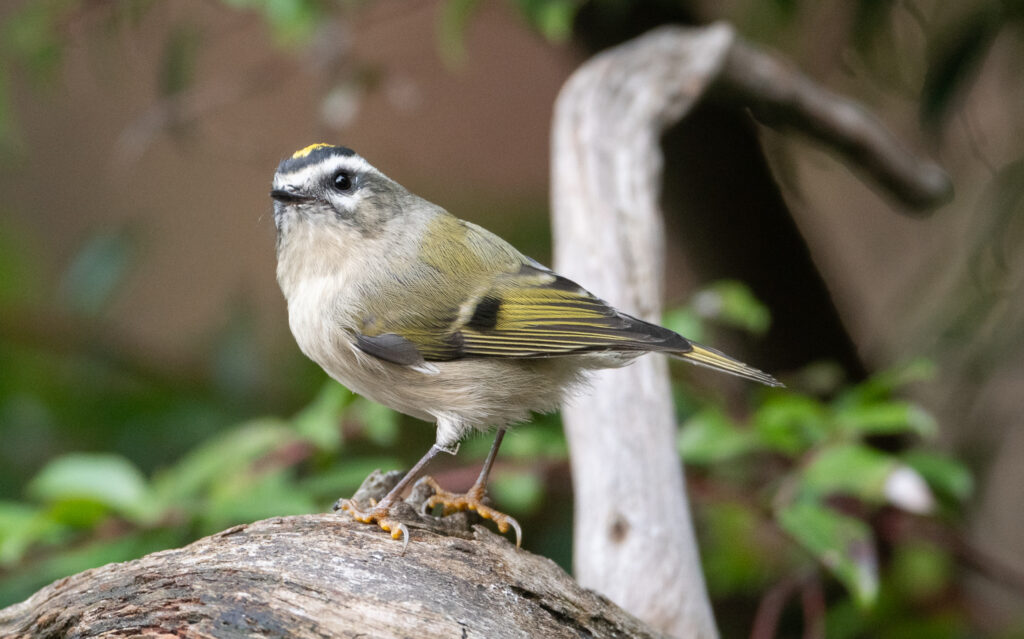
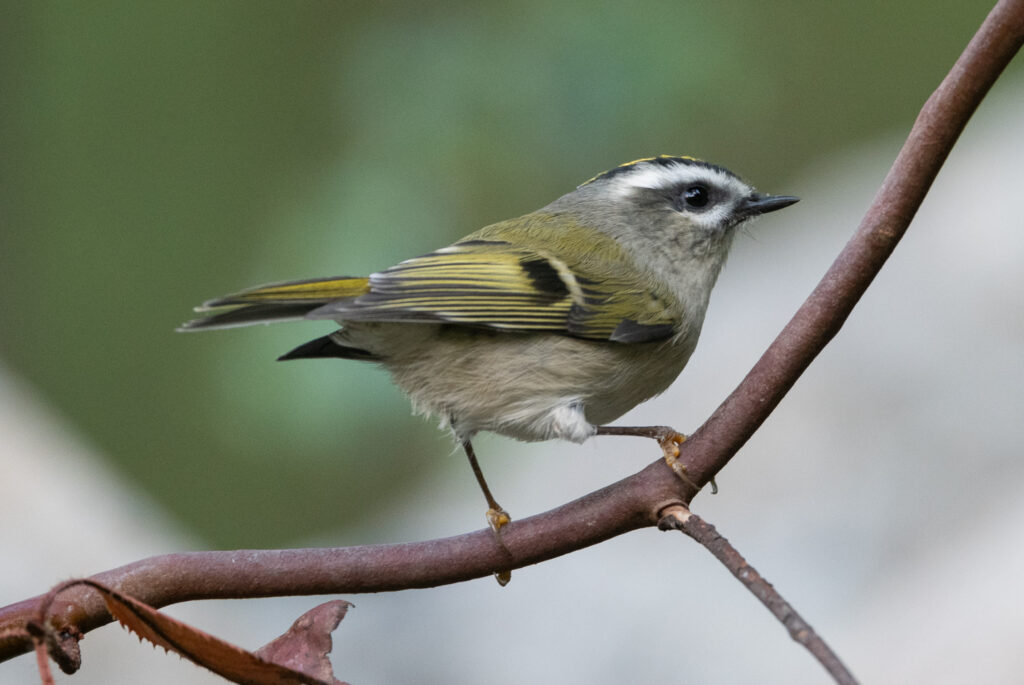
After another considerable wait a Brown creeper made an appearance at its favorite yard feature, a stone birdbath on the outskirts of the yard where I can’t get what I consider quality photographs due to the distance. However, overcrowding at the stone birdbath motivated the creeper to move towards the watercourse (and me). I managed this photo of the creeper on a staging stick immediately adjacent to the watercourse before it decided to leave without bathing.
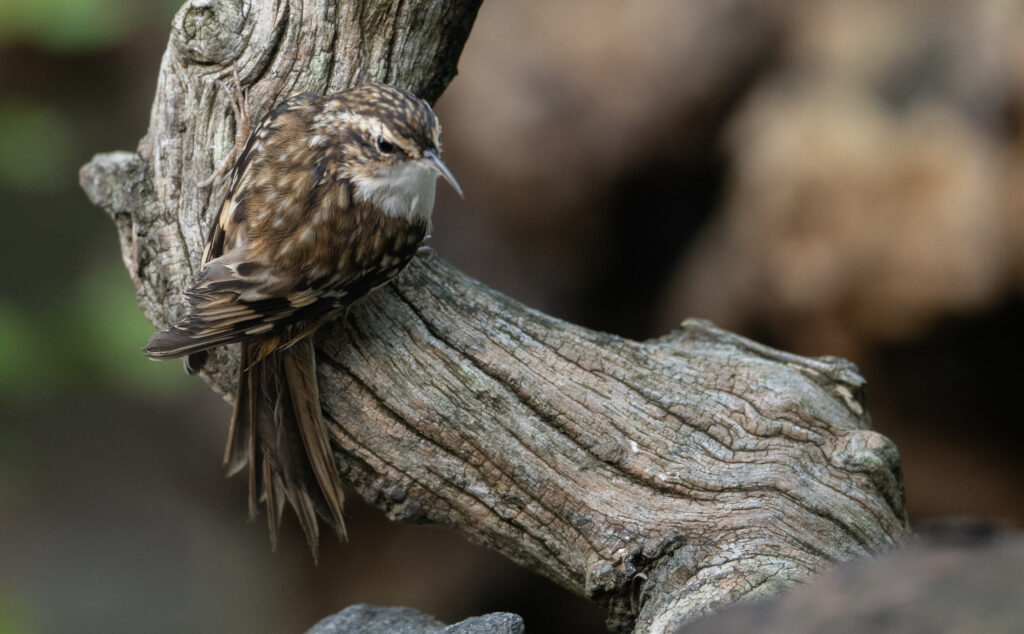
I was suddenly startled to see a juvenile Cedar waxwing perched on a branch in the madrone tree over the stone bird bath. As I watched it was joined by a second juvenile and eventually by two adults. The waxwings spent considerable time bathing and left the yard only to return a short time later.
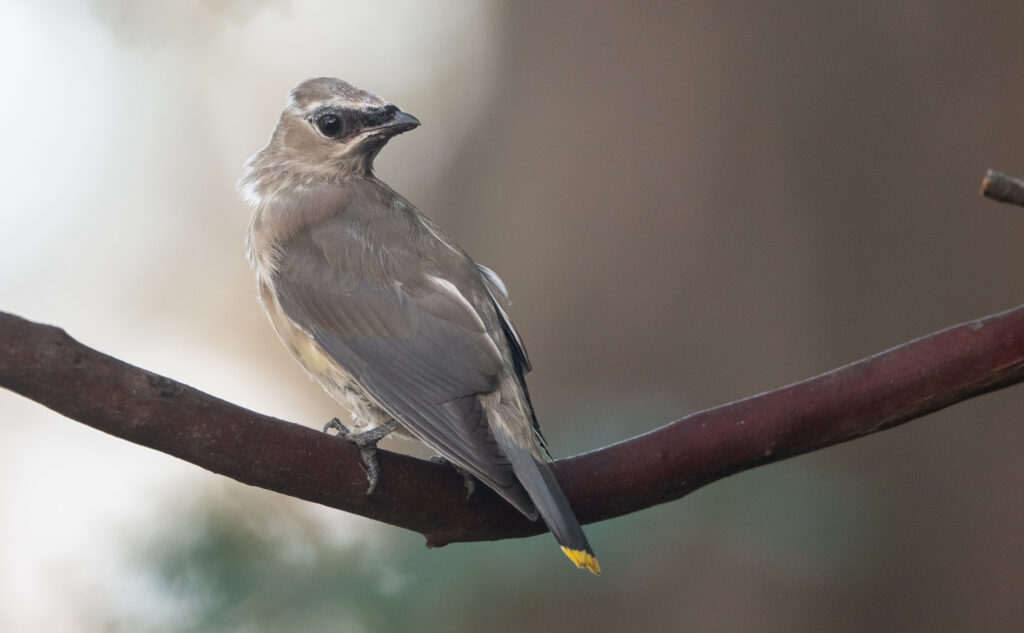
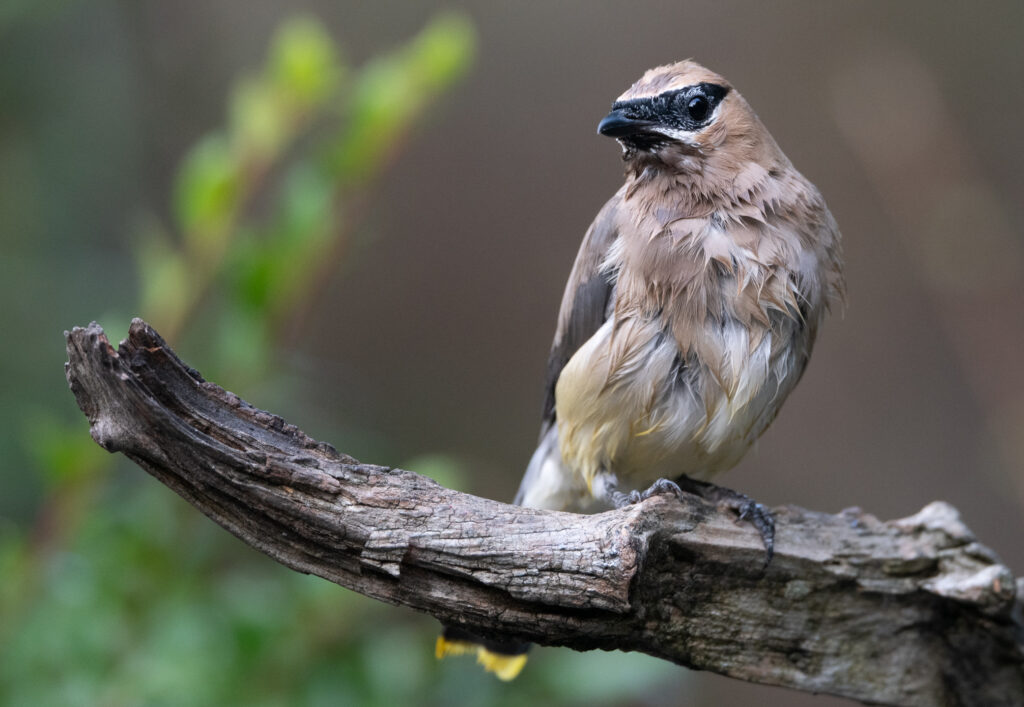
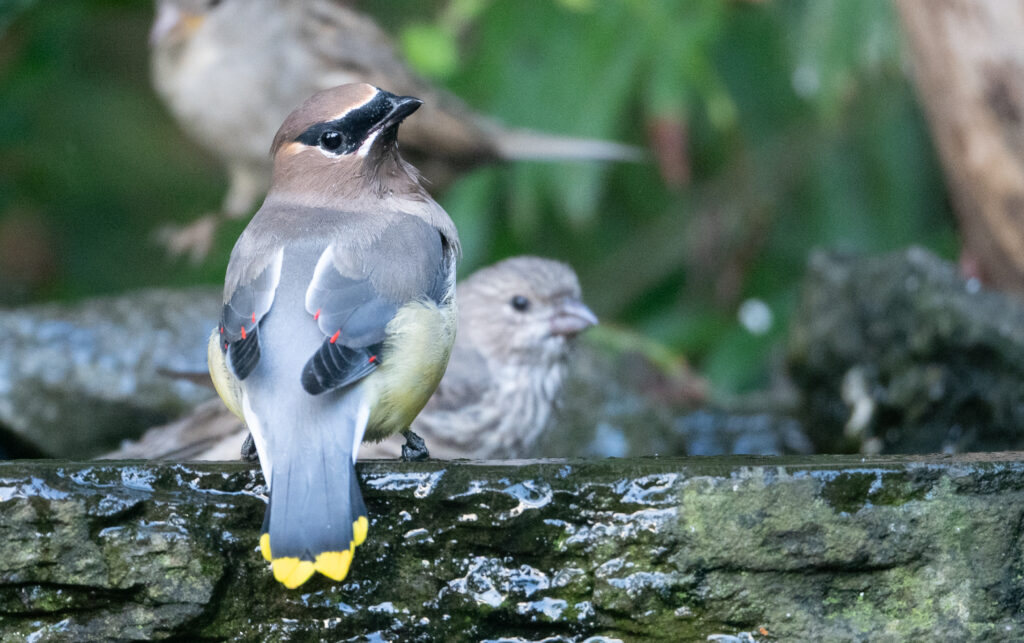
Two Anna’s hummingbirds were contesting the yard as territory, one mature adult and the other an apparent juvenile. This photo is of the adult.
